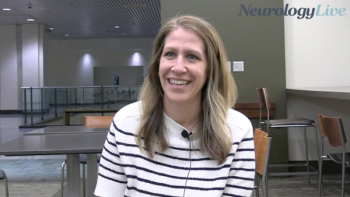
TIL Therapy LN-145 Elicits Responses in Pretreated mNSCLC
A single administration of LN-145 monotherapy resulted in an overall response rate of 21.4% in patients with immunotherapy pretreated metastatic non–small cell lung cancer.
A single administration of the tumor-infiltrating lymphocyte (TIL) therapy LN-145 resulted in an overall response rate (ORR) of 21.4% (95% CI, 8.3%-41.0%) in patients with immunotherapy pretreated metastatic non–small cell lung cancer (mNSCLC), according to findings from cohort 3B of the ongoing basket study IOV-COM-202 (NCT03645928) presented at the
In cohort 3B of the open-label, multicenter, phase 2 study, 28 patients received treatment with LN-145, with 24 having 1 or more efficacy analyses available at the data cutoff of August 24, 2021. The 21.4% ORR was seen across all patients who received treatment (n = 28). In those with at least 1 assessment (n = 24), the ORR was 25%. ORR consisted primarily of partial responses with 1 complete response (N = 6). An additional 42.9% of patients from the full analysis (12 of 28) experienced stable disease, for a disease control rate of 75% (95% CI, 53.3%-90.2%).
“The clinical data for LN-145 in heavily-treated patients with metastatic non–small cell lung cancer is exciting. It represents the first experience for TIL monotherapy to show clinical benefit in metastatic non–small cell lung cancer and demonstrates the feasibility and safety shown in a multicenter study with a centralized manufacturing process," lead study author Adam J. Schoenfeld, MD, medical oncologist at Memorial Sloan Kettering Cancer Center, said in a statement. "I am particularly impressed to see responses following multiple prior therapies, including tumors resistant to anti–PD-(L)1 blockade. We observed responses to LN-145 across a range of PD-L1 expression levels, clinical characteristics, and molecular features."
LN-145 consists of autologous TILs that are harvested from tumor tissue obtained by surgical resection. The collected TILs are expanded ex vivo at a central location and cryopreserved for infusion in a GMP manufacturing process that takes approximately 22 days. The median time from resection to infusion in the study was 35 days.
Cyclophosphamide (CY) and fludarabine (FLU) lymphodepletion was administered prior to infusion of LN-145 in the study. CY was administered 7 and 6 days prior to the infusion and FLU was administered 5 and 1 day before the TILs were infused. After TIL infusion, IL-2 (600,000 IU/Kg) was delivered on the same day and again 4 days following TIL infusion, to support immune expansion and growth. The median number of TILs infused was 20.9 x 10^9.
The median age of patients was 61 years and most had adenocarcinoma histology (78.6%). Most patients were PD-L1–positive, with just 14.3% testing <1% for PD-L1 expression by TPS. All patients enrolled in the study had received a prior checkpoint inhibitor and 96.4% had also received prior treatment with chemotherapy. The median number of prior systemic therapies administered was 2 (range, 1-6) and approximately a third of patients had brain metastases at study entry (35.7%).
The median follow-up duration at the time of the analysis was 9.8 months. Two patients continued to respond to therapy at the time of the assessment. The first, who experienced a complete response, had a response that was ongoing at 20.7 months. The other patient experienced a partial response and continued to response at 3 months.
The study included an analysis of the manufactured TIL product T-cell receptor (TCR) repertoire, which is an indicator of adaptive immunity. Overall, there were 4396 unique TCR clones and the TCR clone diversity on the Shannon Entropy Index was 7.18. On a scale of 0 to 1 for clonal diversity, per the Simpson Clonality Index, the TCR repertoire ranked 0.20, suggesting a more polyclonal sample. Correlations between these figures and clinical outcomes is still ongoing.
Grade 3/4 treatment-emergent adverse events (TEAE), which were defined as any AE taking place within 30 days of TIL infusion or the start of next therapy, were experienced by 96.4% of patients in the study. The most common grade 3/4 TEAEs were thrombocytopenia (67.9%), anemia (50%), hypotension (25%), and neutropenia (21.4%).
There were 2 grade 5 TEAEs reported with LN-145. One of these events was deemed not related to TIL therapy (chronic cardiac failure) and another that was possibly related to LN-145 (multiple organ dysfunction syndrome). The tumor harvesting surgery was associated with AEs for 41% of patients, which were most commonly procedural pain (17.9%) and hypoxia (10.3%). Most of these events were grade 1 or 2 in severity.
"This signal-finding study demonstrated the feasibility of tumor harvest, TIL manufacturing, and TIL treatment in patients with advanced NSCLC," the authors wrote in their poster at the SITC meeting. "Patients tolerated surgical resection, including pulmonary lesions. TIL manufacturing was feasible for most patients. One-time LN-145 treatment with conditioning regimen was well-tolerated."
Iovance, the company developing the TIL therapy, noted that the findings presented at SITC were sufficient to support continued investigation of LN-145 for patients with mNSCLC. In addition to IOV-COM-202, LN-145 is also being investigated as a treatment for lung cancer in the phase 2 IOV-LUN-202 study (NCT04614103).
“There remains a very significant unmet need to increase response rates and prolong survival in the second-line non–small cell lung cancer treatment setting," Friedrich Graf Finckenstein, MD, chief medical officer of Iovance, said in a statement. "The data for LN-145 in this signal-finding cohort demonstrated the potential for TIL in metastatic non–small cell lung cancer across a diverse set of patients and informed our ongoing IOV-LUN-202 clinical study in second-line lung cancer. Iovance is committed to advancing both TIL alone and TIL combinations to address multiple non-small cell lung cancer patient populations.”
For more coverage of SITC 2021,
REFERENCE
Schoenfeld AJ, Lee S, Paz-Ares L, et al. First phase 2 results of autologous tumor-infiltrating lymphocyte (LN-145) monotherapy in patients with advanced, immune checkpoint inhibitor-treated, non-small cell lung cancer (NSCLC). Presented at: 2021 SITC Annual Meeting; November 10-14, 2021; Washington, DC, & Virtual. Poster 458.
Newsletter
Stay at the forefront of cutting-edge science with CGT—your direct line to expert insights, breakthrough data, and real-time coverage of the latest advancements in cell and gene therapy.











































